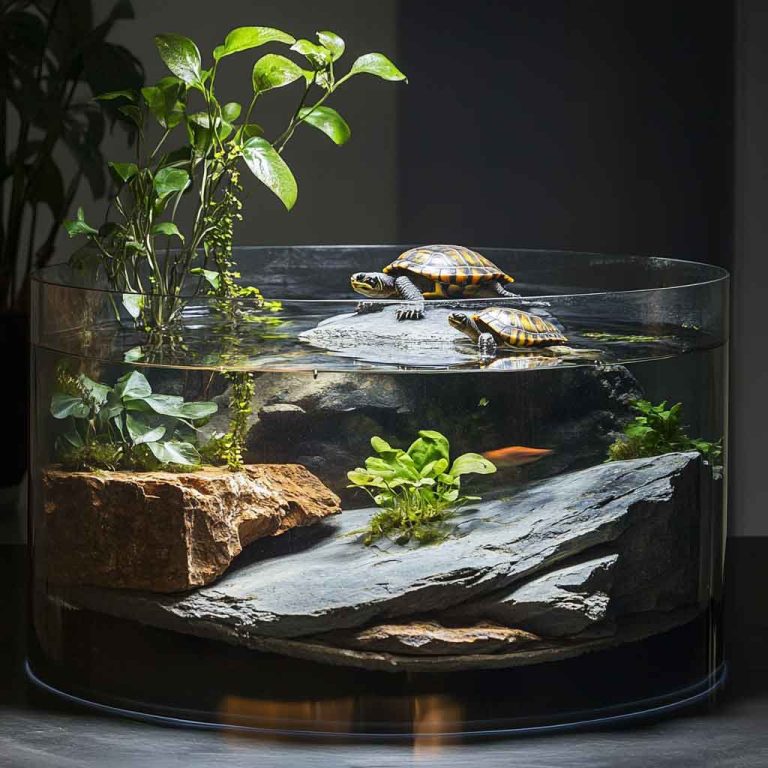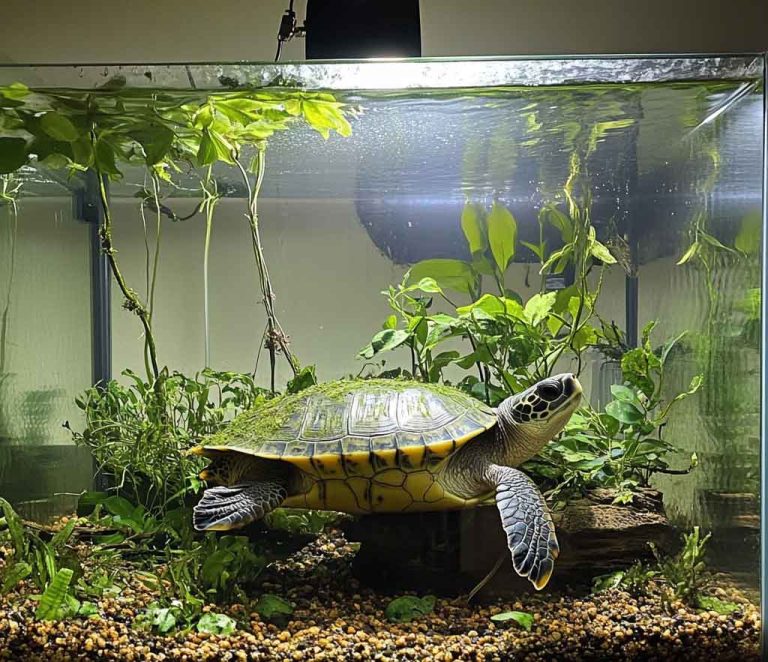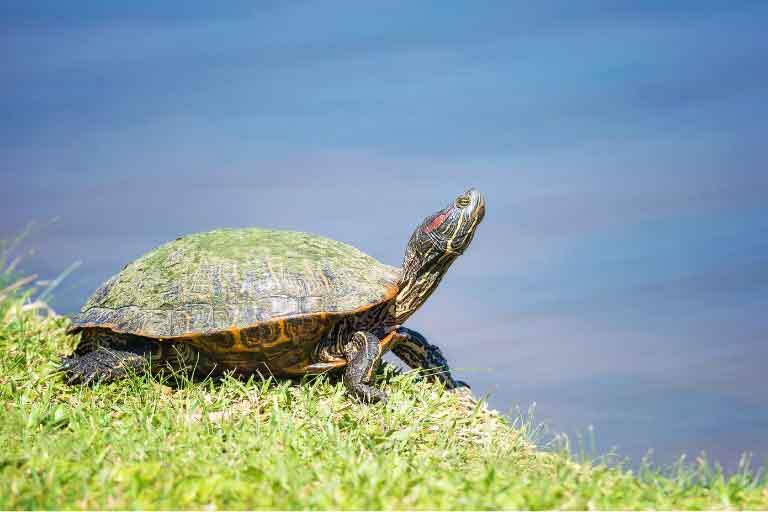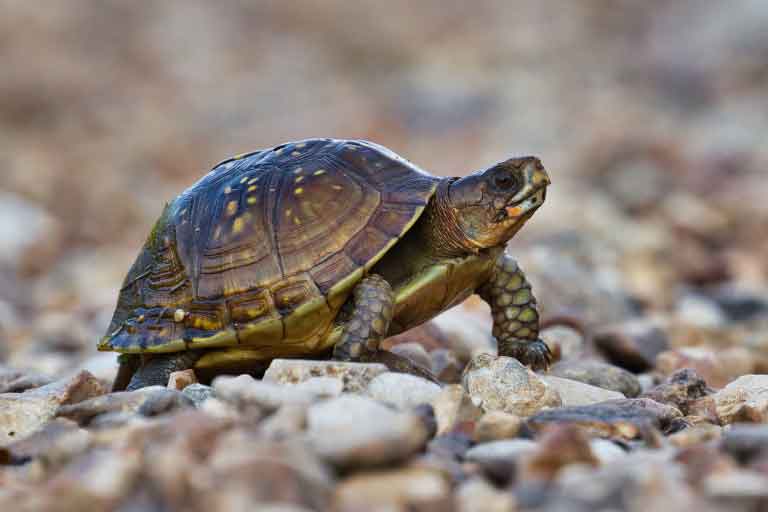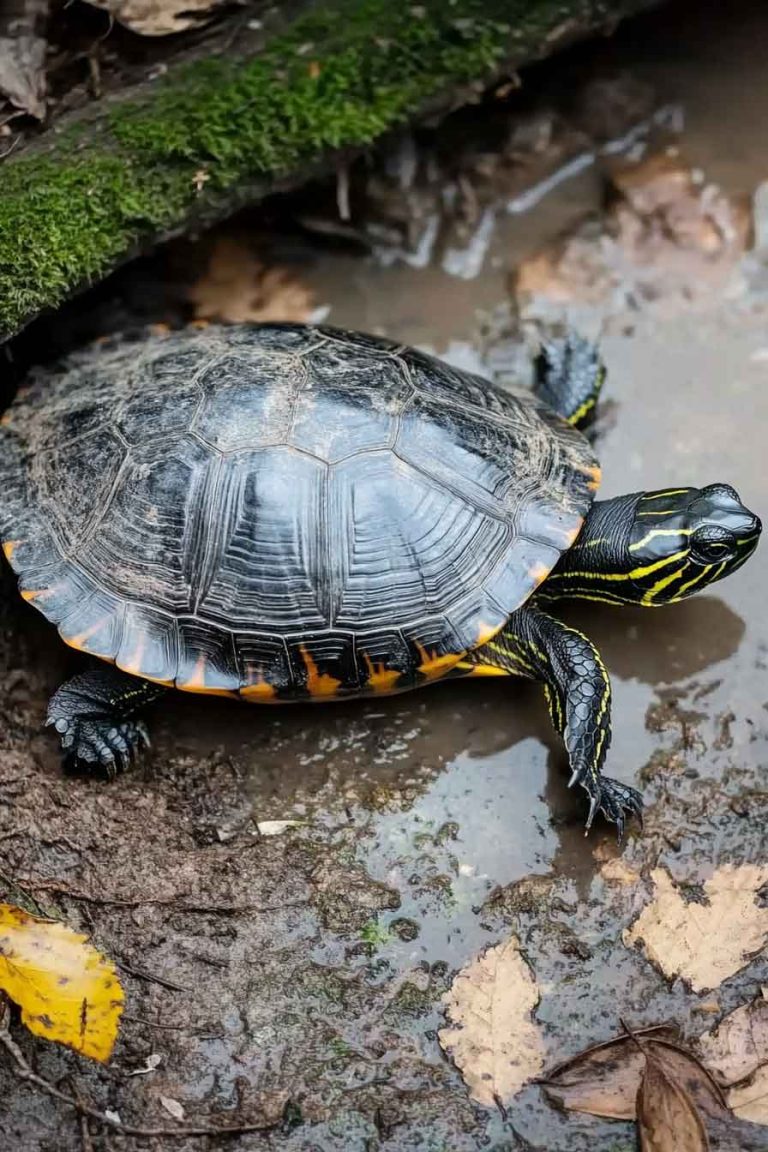Algae In Turtle Tank: Is It Bad For Turtles? Ways To Get Rid Of It
Algae growth in a turtle tank is a common issue for many turtle owners. While a small amount of algae can be harmless or even beneficial, excessive algae can cause problems for both the tank environment and your turtle’s health. In this guide, we’ll explore whether algae is bad for turtles, its potential effects, and…
Algae growth in a turtle tank is a common issue for many turtle owners. While a small amount of algae can be harmless or even beneficial, excessive algae can cause problems for both the tank environment and your turtle’s health. In this guide, we’ll explore whether algae is bad for turtles, its potential effects, and effective ways to manage and prevent it.
This article covers the role of algae in turtle tanks, its benefits and risks, and practical steps to control algae growth to ensure a healthy habitat for your aquatic turtle.
What Is Algae and Why Does It Grow in Turtle Tanks?
Algae are simple, plant-like organisms that thrive in environments with water, light, and nutrients. In turtle tanks, algae often appear as green, brown, or stringy growths on tank walls, decorations, or even on the turtle’s shell.
Several factors contribute to algae growth in turtle tanks:
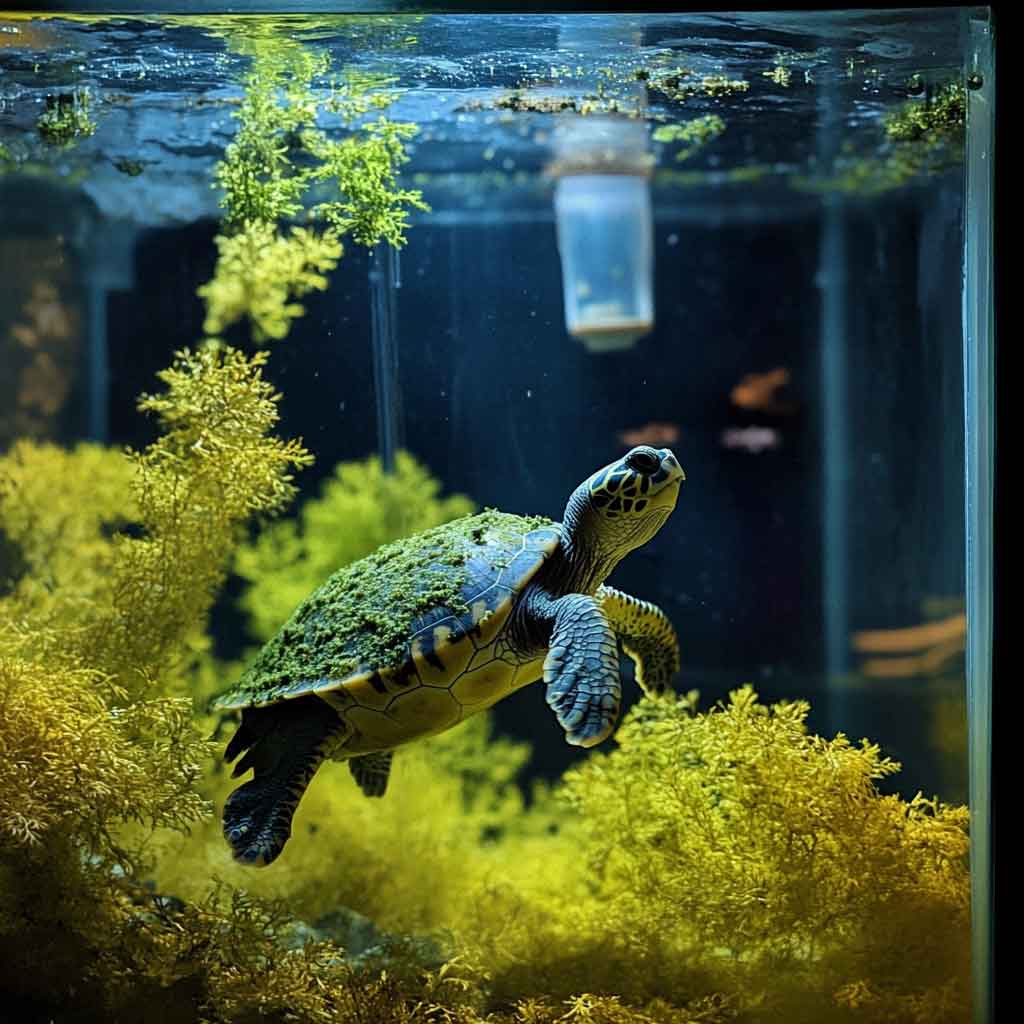
Key Factors Promoting Algae Growth:
Excess Light Exposure
Turtle tanks require lighting for basking and to mimic natural conditions, but too much light—especially direct sunlight—can fuel algae growth. Prolonged exposure to UVB or fluorescent lights can also contribute to this issue.
Nutrient Overload
Turtles are messy eaters, and uneaten food, waste, and decaying organic matter release nutrients like nitrates and phosphates into the water. These nutrients act as fertilizer for algae, encouraging rapid growth.
Poor Water Circulation
Stagnant water or inadequate filtration allows nutrients to accumulate, creating an ideal environment for algae to flourish. A lack of water movement can also prevent the tank from self-cleaning effectively.
Understanding these factors is crucial for managing algae and maintaining a balanced tank ecosystem. In the next section, we’ll discuss whether algae is harmful to turtles and how it impacts their health.
Is Algae Bad for Turtles?
While algae are a natural part of many aquatic environments, their presence in turtle tanks can be a double-edged sword. A small amount of algae can provide benefits, but excessive growth can pose risks to your turtle’s health and the tank’s cleanliness.
Benefits of Algae in Turtle Tanks
- Natural Food Source: Some turtles, especially herbivores like green sea turtles, may nibble on algae, supplementing their diet with nutrients.
- Oxygen Production: Algae produce oxygen through photosynthesis, which can help maintain healthy oxygen levels in the water.
- Aesthetic Appeal: A light layer of algae can give the tank a natural, vibrant look, mimicking a turtle’s wild habitat.
Risks of Excessive Algae
- Water Quality Issues: Dense algae growth can deplete oxygen levels at night when photosynthesis stops, potentially stressing or suffocating turtles. Algae can also trap debris, worsening water quality.
- pH Imbalance: Rapid algae growth can alter the water’s pH, making it too acidic or alkaline, which can irritate a turtle’s skin or eyes.
- Shell Problems: Algae growing on a turtle’s shell can lead to shell rot or infections if not cleaned regularly, as it may trap moisture and bacteria.
- Clogged Filters: Algae can clog tank filters, reducing their efficiency and allowing toxins like ammonia to build up.
When to Be Concerned
A thin layer of algae on tank surfaces is usually harmless, but thick, slimy patches or cloudy green water (caused by free-floating algae blooms) signal trouble. If your turtle shows signs of lethargy, skin irritation, or reduced appetite, poor water quality from algae overgrowth could be the culprit.
How to Control and Prevent Algae Growth
Managing algae in a turtle tank involves a combination of proactive prevention and targeted removal. Below are practical strategies to keep algae under control without harming your turtle.
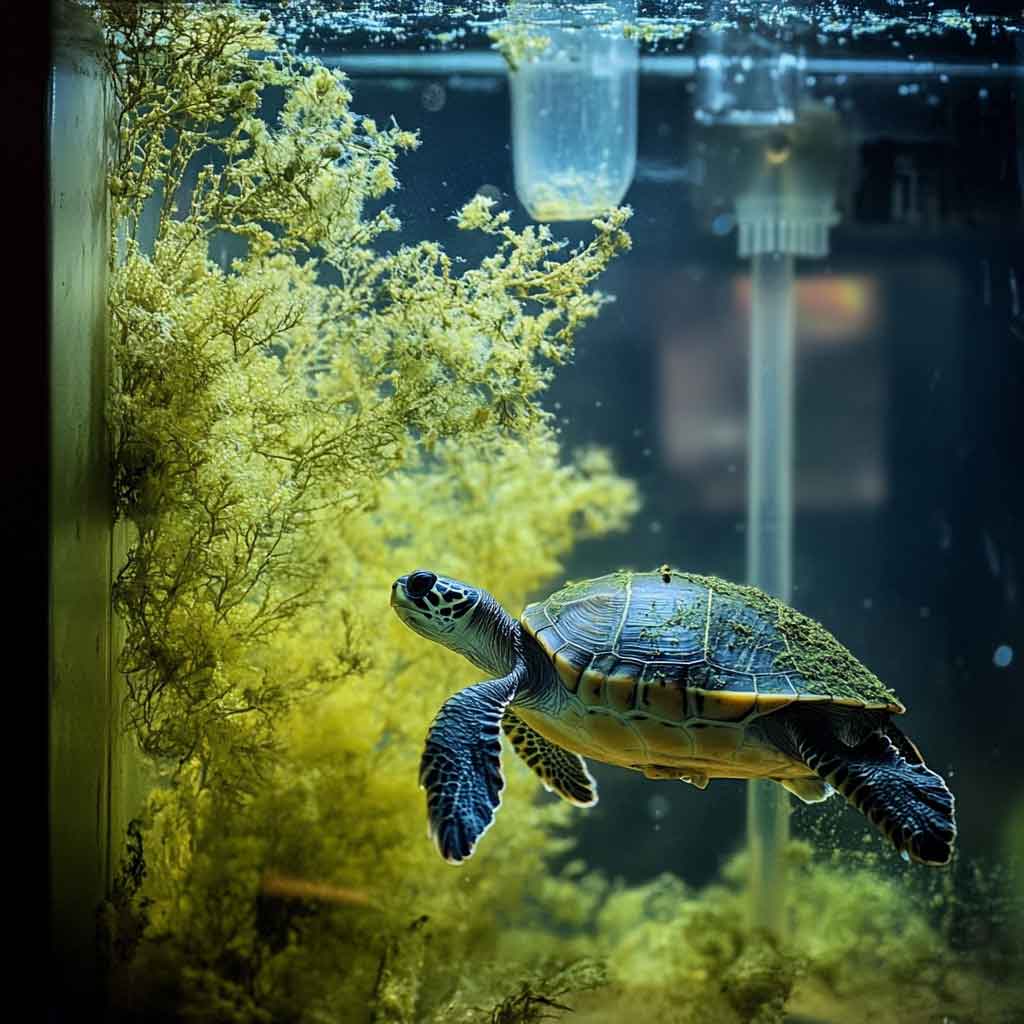
1. Optimize Lighting
- Limit Light Exposure: Keep tank lights on for 10-12 hours daily, mimicking natural day-night cycles. Avoid placing the tank in direct sunlight.
- Use Timers: Install a timer for basking and UVB lights to ensure consistent lighting schedules.
- Choose Appropriate Bulbs: Use bulbs designed for turtle tanks, as overly intense lights can promote algae growth.
2. Improve Water Quality
- Regular Water Changes: Replace 25-50% of the tank water weekly to reduce nutrient buildup. Use a siphon to remove debris from the tank bottom.
- Invest in a Quality Filter: Choose a canister or external filter rated for at least twice the tank’s volume, as turtles produce significant waste.
- Test Water Parameters: Monitor nitrates, phosphates, and pH levels with a water testing kit to catch imbalances early.
In the final section, we’ll cover additional algae removal techniques, natural solutions, and answers to common questions about algae in turtle tanks.
3. Manual Algae Removal
- Scrub Tank Surfaces: Use an aquarium-safe sponge or algae scraper to clean tank walls and decorations. Avoid harsh chemicals that could harm your turtle.
- Clean Turtle’s Shell: Gently scrub your turtle’s shell with a soft toothbrush during routine handling to remove algae buildup. Ensure the turtle is comfortable and avoid stressing it.
- Vacuum Substrate: If your tank has gravel or substrate, use a gravel vacuum during water changes to remove algae and debris.
4. Introduce Natural Algae Eaters
- Add Algae-Eating Species: Certain fish (like plecostomus) or snails (like nerite snails) can help control algae naturally. Ensure they are compatible with your turtle, as some turtles may try to eat them.
- Use Live Plants: Aquatic plants like anubias or java fern compete with algae for nutrients, reducing algae growth while enhancing the tank’s appearance.
5. Chemical Solutions (Use with Caution)
- Algaecides: Only use turtle-safe algaecides as a last resort, and follow the instructions carefully. Overuse can harm your turtle or disrupt the tank’s ecosystem.
- UV Sterilizers: A UV sterilizer can kill free-floating algae in the water, preventing blooms. This is a more advanced solution for persistent algae problems.
FAQs
1. Is green algae harmful to turtles?
Green algae are generally harmless in small amounts and can even be a food source for some turtles. However, excessive green algae can degrade water quality and lead to health issues like shell rot or respiratory problems.
2. How often should I clean my turtle tank to prevent algae?
Perform 25-50% water changes weekly and scrub tank surfaces as needed, typically every 1-2 weeks. Regular maintenance prevents nutrient buildup that fuels algae growth.
3. Can I use bleach to clean algae from my turtle tank?
Never use bleach in a turtle tank, as it’s toxic to turtles. Use aquarium-safe cleaning tools and rinse thoroughly with dechlorinated water before returning the turtle to the tank.
4. Why does algae keep coming back after cleaning?
Persistent algae growth is often due to excess light, high nutrient levels, or poor filtration. Address these root causes by optimizing lighting, improving filtration, and maintaining regular water changes.
Final Word
Algae in a turtle tank can be both a natural occurrence and a potential problem. While a small amount of algae can benefit the tank ecosystem, excessive growth can compromise water quality and harm your turtle’s health. By optimizing lighting, maintaining water quality, and using manual or natural algae control methods, you can keep your turtle’s tank clean and healthy.
Regular maintenance and monitoring are key to preventing algae overgrowth. With the right care, your turtle can thrive in a balanced, algae-free environment, ensuring its long-term health and happiness.


